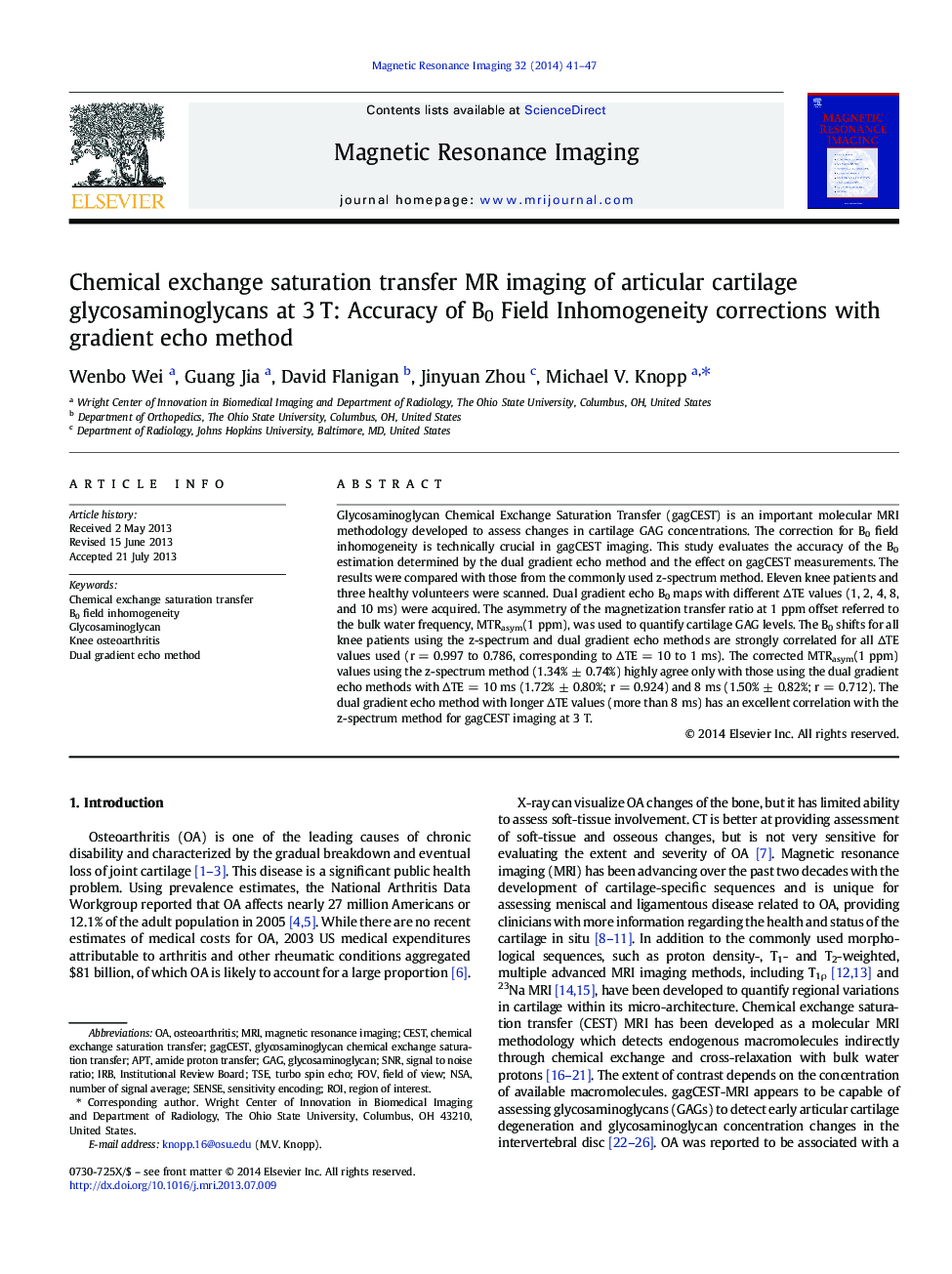| Article ID | Journal | Published Year | Pages | File Type |
|---|---|---|---|---|
| 10712574 | Magnetic Resonance Imaging | 2014 | 7 Pages |
Abstract
Glycosaminoglycan Chemical Exchange Saturation Transfer (gagCEST) is an important molecular MRI methodology developed to assess changes in cartilage GAG concentrations. The correction for B0 field inhomogeneity is technically crucial in gagCEST imaging. This study evaluates the accuracy of the B0 estimation determined by the dual gradient echo method and the effect on gagCEST measurements. The results were compared with those from the commonly used z-spectrum method. Eleven knee patients and three healthy volunteers were scanned. Dual gradient echo B0 maps with different âTE values (1, 2, 4, 8, and 10 ms) were acquired. The asymmetry of the magnetization transfer ratio at 1 ppm offset referred to the bulk water frequency, MTRasym(1 ppm), was used to quantify cartilage GAG levels. The B0 shifts for all knee patients using the z-spectrum and dual gradient echo methods are strongly correlated for all âTE values used (r = 0.997 to 0.786, corresponding to âTE = 10 to 1 ms). The corrected MTRasym(1 ppm) values using the z-spectrum method (1.34% ± 0.74%) highly agree only with those using the dual gradient echo methods with âTE = 10 ms (1.72% ± 0.80%; r = 0.924) and 8 ms (1.50% ± 0.82%; r = 0.712). The dual gradient echo method with longer âTE values (more than 8 ms) has an excellent correlation with the z-spectrum method for gagCEST imaging at 3 T.
Keywords
Related Topics
Physical Sciences and Engineering
Physics and Astronomy
Condensed Matter Physics
Authors
Wenbo Wei, Guang Jia, David Flanigan, Jinyuan Zhou, Michael V. Knopp,
